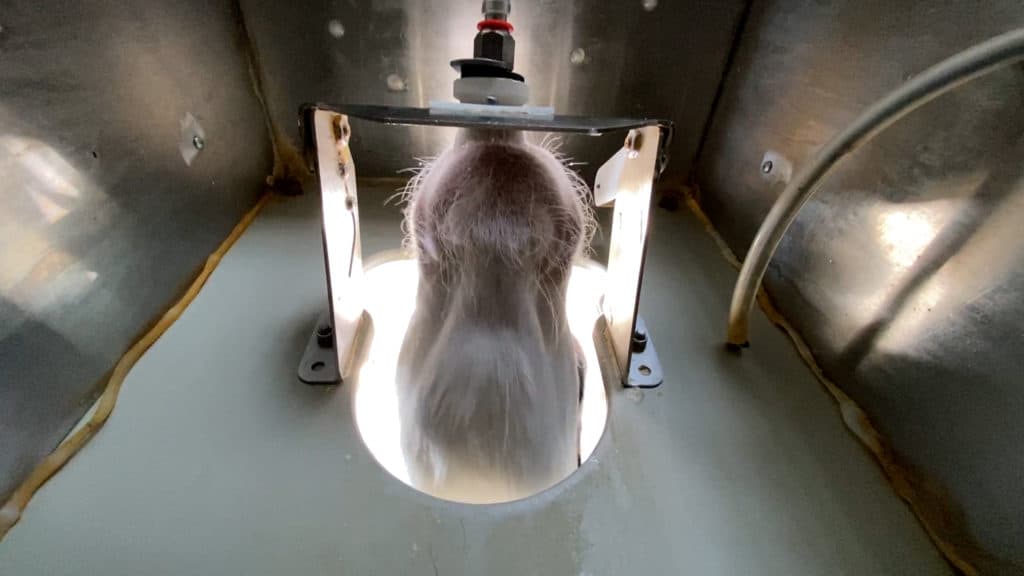When is the best time to introduce calves to the autofeeder?

There are two views to consider when making this decision.
Traditionally it’s been highly recommended to keep calves housed individually for health reasons. Typically, calves have some mild scours sometime during the first 10 days of life, likely due to delays in development of a more stable intestinal microbiome. Cryptosporidium can also be a challenge then. These factors would lead to a recommendation to keep calves housed individually from birth to at least 14 days of life.
However, there are several reasons for moving calves into group housing and the autofeeder within three to five days of life.
Research by Costa (2015) and others with pair housing have found that calves pair housed at birth had higher feed intake and weight gain than calves pair housed at 6 weeks of age. Pair housed or group housed calves locate feed sooner and spend more time eating in competitive situations than calves housed individually.
Most management decisions made on the dairy rarely have simple answers! Frequently, my response to a question is that IT DEPENDS. I tend to recommend moving calves into group housing sooner rather than later.
· These calves are easier to train to the autofeeder. It’s not uncommon to see intakes exceeding 8 L within a few days of life. They have not been “indoctrinated” to expecting feed twice daily after long intervals. In calves introduced to the autofeeder later in life (10 -14 days or more) I find that these calves may take more than four days to realize that they can eat more often than twice a day.
· Early life feeding plans recommend limiting intake to no more than 2L every two hours. One might compare this to the feeding behavior of a calf nursing its dam. Calves are “allowed” to drink as much milk as they desire, just not too much at any one meal.
· With moderate meal sizes they will return to the feeder more often and achieve satiety sooner in life.
· Their behavior is unlike calves fed twice a day, particularly as they get older and meal sizes for individually raised calves may be up to 4L. Calves on the autofeeder fed ad libitum tend to be quieter. One rarely hears these calves, unless there is a problem with the feeder, which prevents them from eating.
Achieving success with moving calves to the autofeeder sooner is not guaranteed. Success requires:
· Excellent prepartum care of the dam to encourage birth of strong vigorous calves.
· A clean calving environment to discourage establish of an undesirable microbiome in the newborn calf.
· Excellent colostrum management. More than 70% of the calves born on the dairy should achieve serum total protein scores above 5.8 g/dl or a brix reading of more than 8.9, which indicates excellent absorption of colostrum immune globulins.
· Excellent sanitation of the feeder. Implement at least three mixer/heat exchanger cleanings and one circuit cleaning /day. Newer autofeeders will automatically circuit clean as needed. Exchange nipples for clean ones daily and replace them when they show any signs of wear. Hand scrub the area around the nipple daily. Remember that these are young mammals that don’t tolerate unclean conditions.
· Use the priority option on the feeder in the event that your system is not equipped with the IFS or quattro, which enables all calves on one feeder to eat at one time.
· Bring calves to feeder when they are hungry – either early in the morning or early afternoon if they have been hand fed in the morning. When calves are sucking on the nipple well, back up and leave them.
· Leave calves for at least 8-12 hours after their first meal on the feeder.
In summary, consider moving calves into group housing sooner rather than later. If you have been unsuccessful, it’s probably because of deficiencies in herd health and early life calf management and not the autofeeder. Early moving of calves to the autofeeder enables the farm to fully utilize the features of the autofeeder and allow one to spend more time with calves and less time cleaning buckets or bottles and cleaning calf pens.


lBZskune